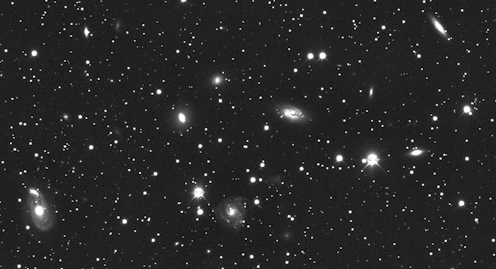
Scientists see flora, fauna and phenomena the rest of us rarely do. In this series, we’ve invited them to share their unique photos.
Across Australia, astronomers are using cutting-edge technologies to capture the night sky, hoping to eventually tackle some of our biggest questions about the universe.
As we and our colleagues delve deeper into the cosmos, looking for cosmic explosions, our observations are helping shed light on longstanding mysteries — and making way for entirely new paths of inquiry.
Cosmic eruptions fill the sky
Swinburne’s Deeper, Wider, Faster (DWF) program — which one of us (Sara Webb) worked on throughout her PhD — was developed to hunt for the fastest and most mysterious explosions in the universe.
But to understand what causes cosmic explosions, we must “look” at these events with multiple eyes, through different telescopes around the world. Today we’ll take you on a journey using data from one of these telescopes, the Blanco 4m, at Chile’s Cerro Tololo Inter-American Observatory.
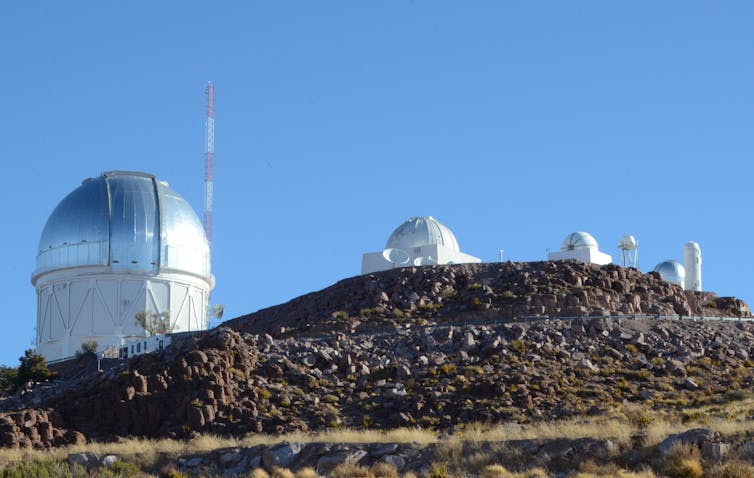
First, all 60+ individual images taken of the field of view from this telescope are combined into a mosaic. Within them we see the thousands of bright sources.
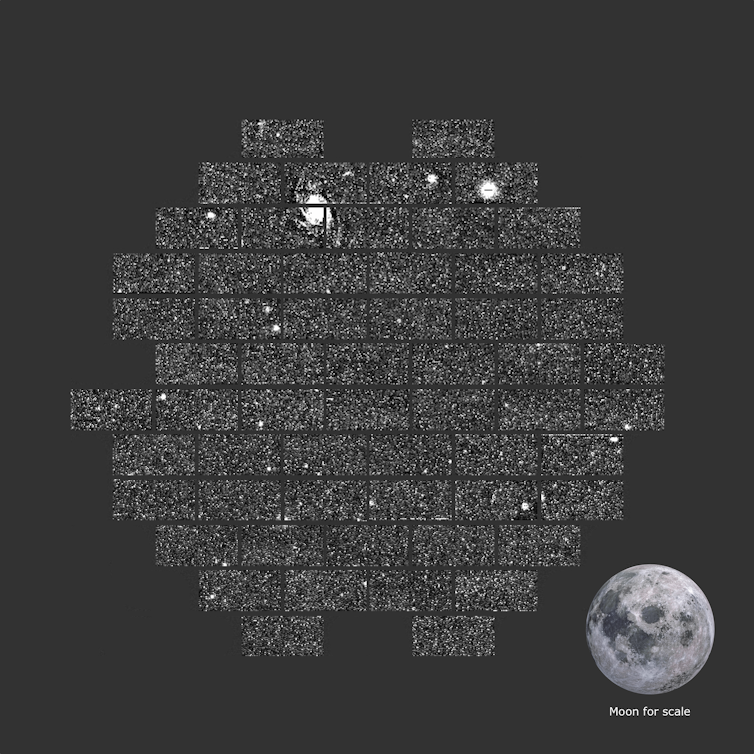
These images are transferred across the Pacific to be processed on Swinburne’s OzStar supercomputer — which is more powerful than 10,000 personal laptops and can handle thousands of different jobs at once.
Once uploaded, the images are broken down into smaller chunks. This is when we start to see details.
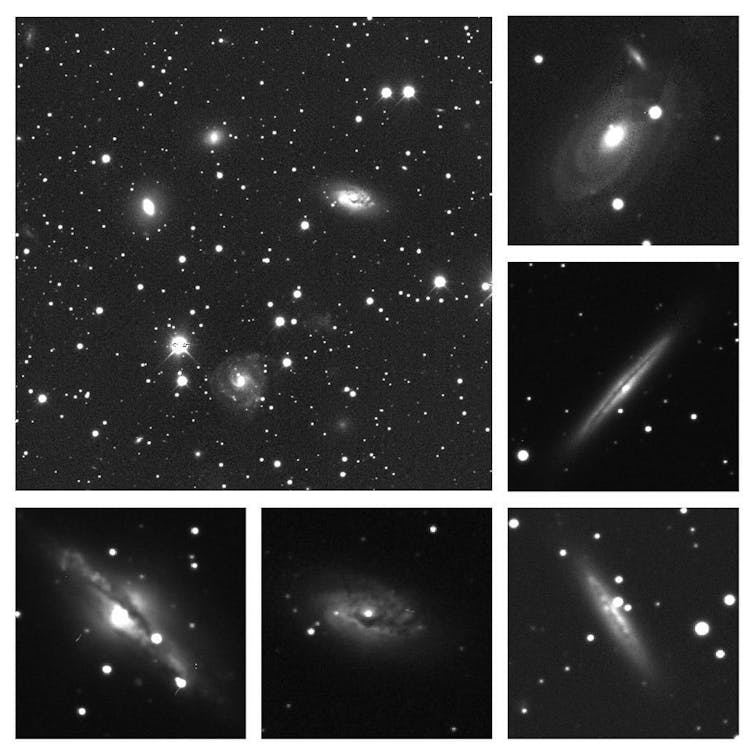
But the galaxies above, spectacular as they are, still aren’t what we’re looking for. We want to capture new “sources” resulting from dying stars and cosmic explosions, which we can identify by having our computers search for light in places it wasn’t previously detected.
A source could be many different things including a flaring star, a dying star or an asteroid. To find out we have to collect continuous information about its brightness and the different wavelengths of light it emits, such as radio, x-ray, gamma-ray and so forth.

Once we spot a source, we monitor changes in its brightness over the coming hours and days. If we think it may represent a rare cosmic explosions, we trigger other telescopes to collect additional data.
Peering into the distant past
Galaxies are vast collections of stars, gas, dust and dark matter. They vary in shape, size and colour, but the two main types we see in the universe today are blue spirals and red ellipticals. But how do they form? And why are there different types?
Astronomers know the shapes and colours of a galaxy are linked to its evolution, but they’re still trying figure out exactly which shapes and colours are linked to specific growth pathways.
We think galaxies grow in size and mass through two main channels. They produce stars when their vast hydrogen clouds collapse under gravity. As more gas is transformed into stars, they grow in size.
Thanks to space-based technology such as the Hubble Space Telescope and powerful on-ground telescopes, astronomers can now peer back in time to study galaxy growth over the history of the universe.
This is possible since the further away a galaxy is, the longer its light travelled to reach us. Because the speed of light is constant, we can determine when the light was emitted — as long as we know the galaxy’s distance from Earth (called its “redshift”).
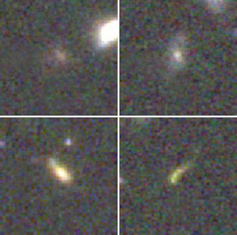
I measured this growth as part of my PhD, by taking images of galaxies that exist at different redshifts from as far back as when the universe was only one billion years old, and comparing their sizes.
When galaxies merge
Looking around the universe today, we mostly see galaxies clustered together. Astronomers believe the nature of a galaxy’s surroundings or its environment can affect its growth pathways, similar to how people in large cities can access more resources than those in rural areas.
When many galaxies are grouped together they may interact. And this interaction can stimulate bursts of star formation within a particular galaxy.
That said, this growth spurt may be short-lived, as gas and stars can be stripped away through the gravitational interaction between multiple galaxies, thereby limiting future star formation and growth in a single galaxy.
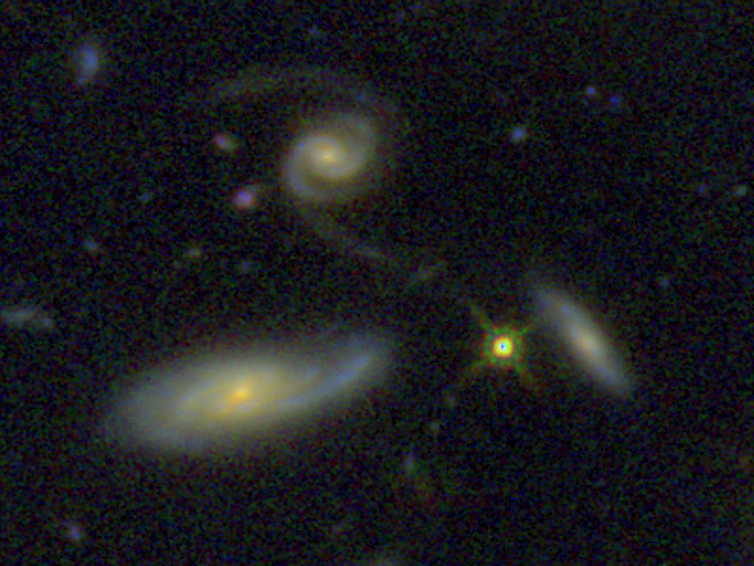
But even if a galaxy can’t form stars, it can still grow by merging with or consuming smaller galaxies. For example, the Milky Way will one day consume the smaller Magellanic clouds, which are dwarf galaxies. It will also merge with the slightly larger Andromeda galaxy one day, to form one giant galaxy.
Yet, while many studies have been conducted unpack galaxy evolution, we still can’t say all our questions have been answered.
It took billions of years for the galaxy clusters we observe today to form. But if astronomers can leverage the latest technologies and peer further into the distance than ever before, we will hopefully gain clues about how a galaxy’s environment can impact its growth.
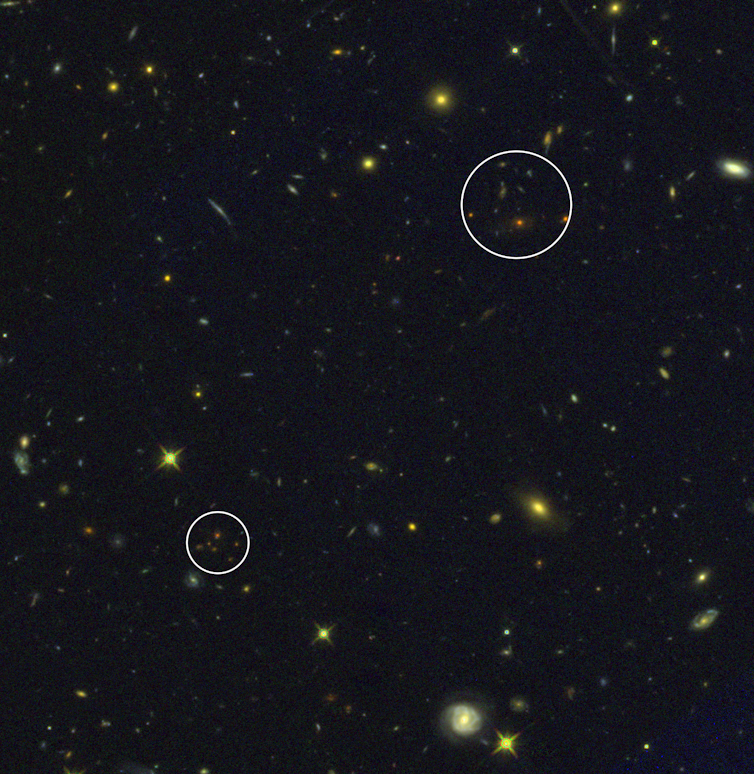
The bending of spacetime reveals secrets
With decades of observations and millions of galaxies captured in surveys, experts have many theories regarding how galaxies form, and how the universe evolves. This field is called cosmology.
Thanks to Albert Einstein, we know the gravitational force of massive objects in space causes space to bend. This has been observed through a phenomena known as “lensing”, where vast amounts of matter are concentrated in one area within objects such as black holes, galaxies or galaxy clusters.
Their gravity distorts spacetime, acting as a giant lens to reveal warped images of more distant objects behind them. Using lensing, astronomers have developed ways to find and study distant galaxies that would otherwise be hidden from view.
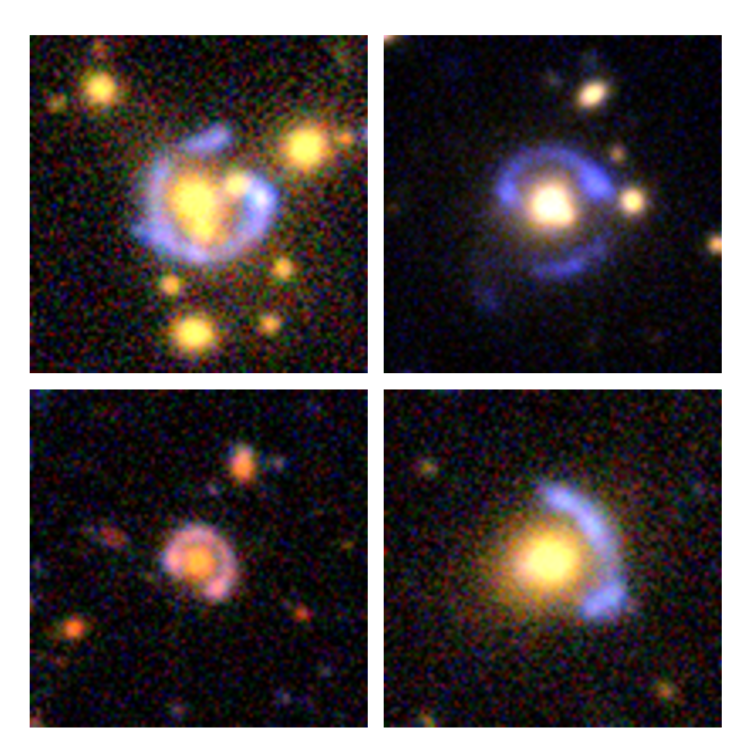
These observations continue to drive our understanding of galaxy evolution. They’re challenging our theories of when and how galaxies form and grow.
One 2018 discovery made by a group of researchers, including myself, revealed a set of massive and already evolved galaxies from when the universe was only about one-sixth of its current age. They would have had to form and grow at an extremely rapidly to fit our current models of galaxy growth.
In a upcoming investigation, Swinburne Professor Karl Glazebrook will lead my team and I to become some of the first astronomers granted access to Nasa’s James Webb Space Telescope to study these early galaxies.
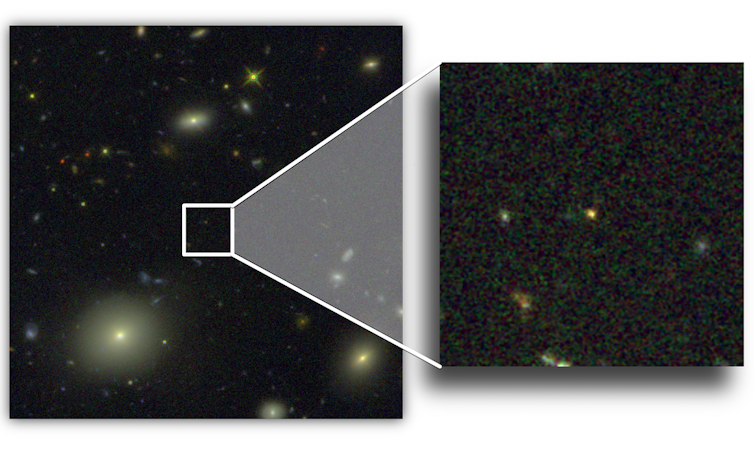
The authors do not work for, consult, own shares in or receive funding from any company or organisation that would benefit from this article, and have disclosed no relevant affiliations beyond their academic appointment.
* This article was originally published at The Conversation

0 Comments